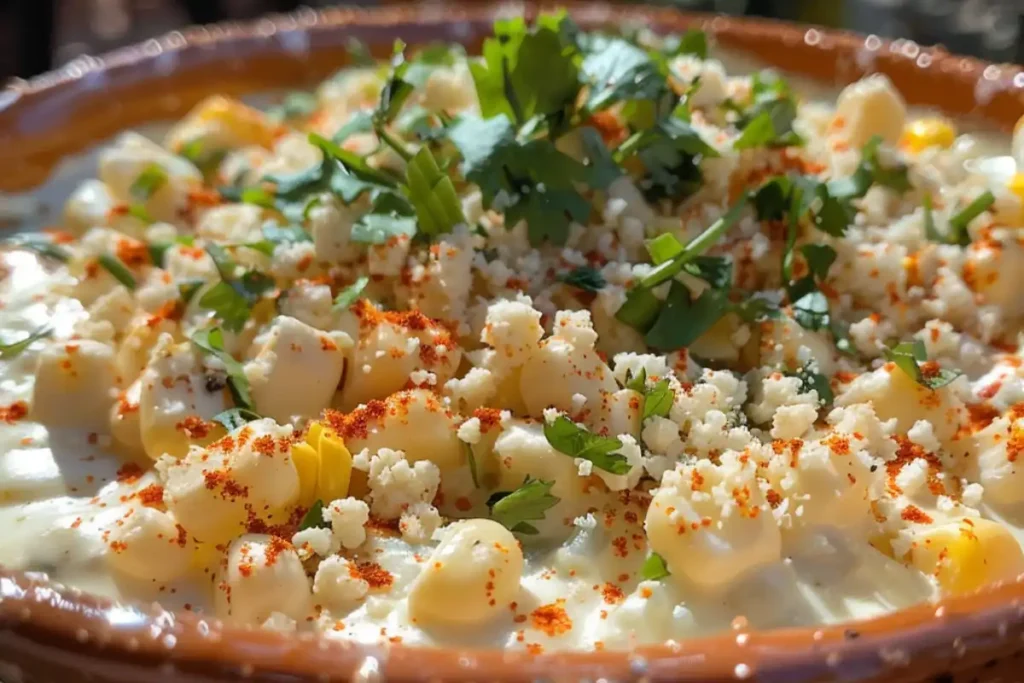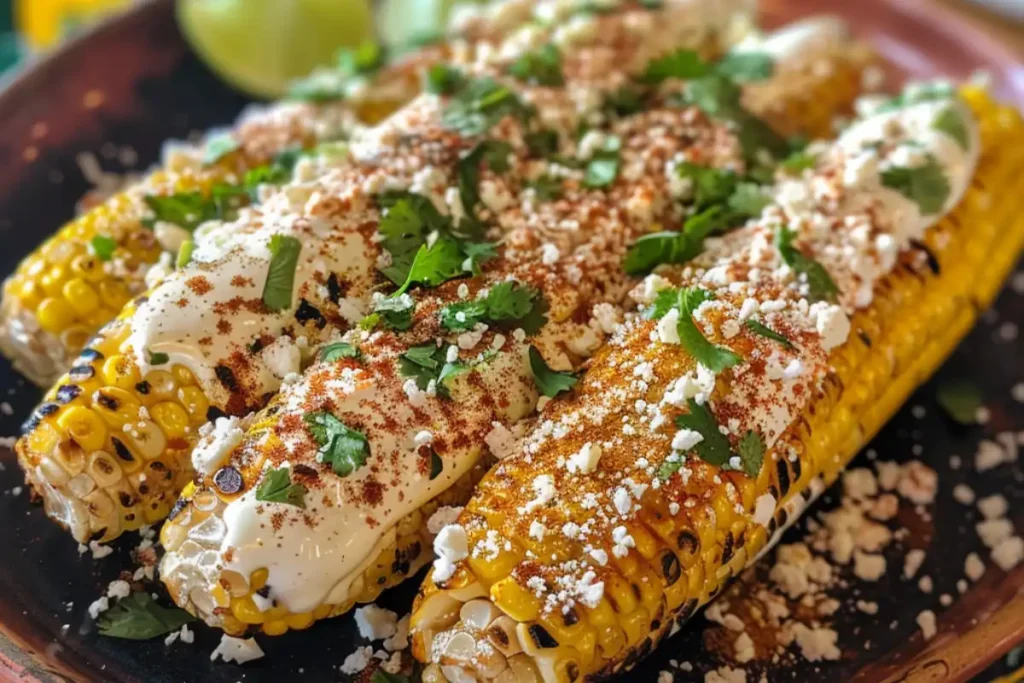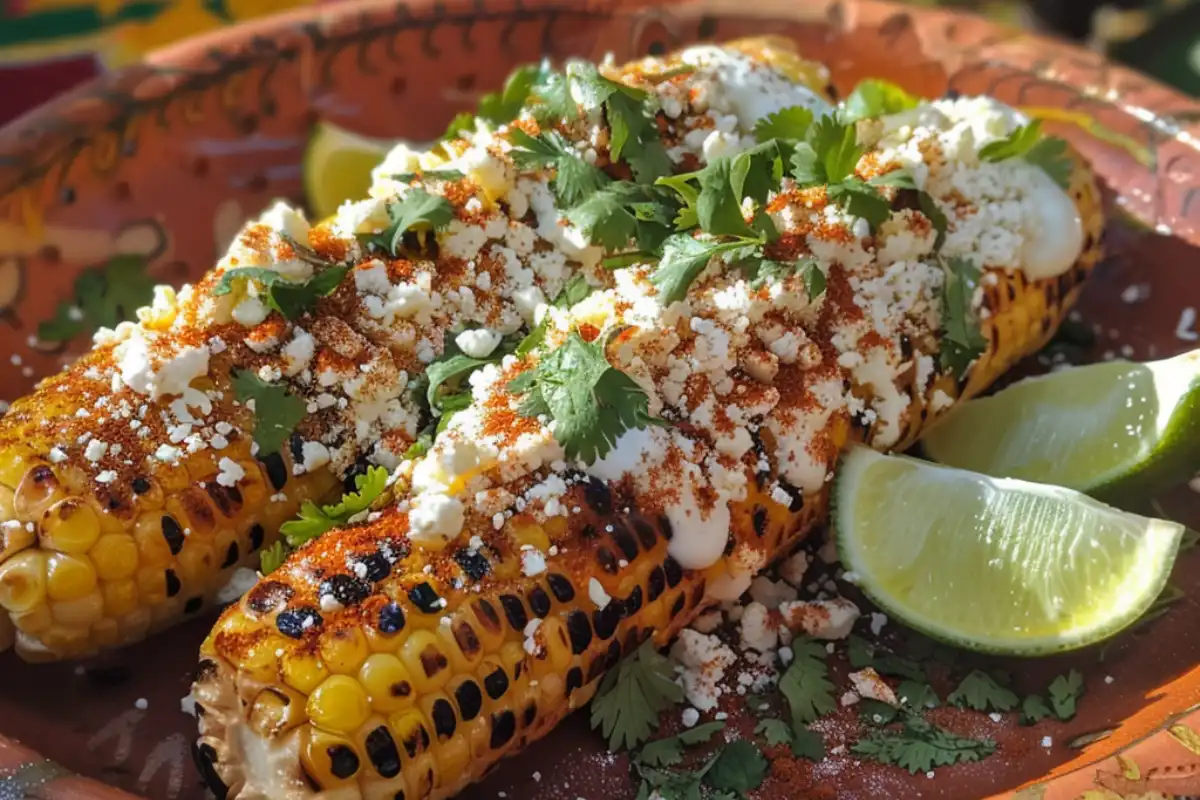Elote, commonly known as Mexican street corn, is a beloved dish that brings the vibrancy and flavors of Mexico to life. The combination of grilled or boiled corn with tangy, spicy, and creamy toppings creates a snack that’s both indulgent and satisfying. But what exactly is a this dish made of, and how has this humble street food captured the hearts (and taste buds) of people across the globe?
In this article, we’ll explore the ingredients, history, variations, and cultural significance of elote, as well as how you can make this dish at home. this dish has roots in the agricultural history of Mexico, where corn was first cultivated by indigenous civilizations thousands of years ago. For more about the significance of corn in Mexican cuisine, read about its historical importance.
Elote is more than just a food—it’s a cultural symbol in Mexico. Street vendors known as eloteros prepare and serve this dish on the streets of Mexico, creating a shared culinary experience that has found popularity beyond Mexico’s borders. With its bold flavors and simple ingredients, elote has also become a trendy dish in the U.S. To learn more about corn’s health benefits, check out this guide on corn’s nutritional value.
1. What is Elote?
Elote is corn on the cob, grilled or boiled, and then coated with a variety of toppings that deliver a burst of flavors in every bite. The word elote originates from the Nahuatl word “elotitutl,” meaning tender cob. While the dish is simple, preparation and serving methods vary widely across different regions of Mexico.
As one of Mexico’s most popular street foods, this dish appears at festivals, markets, and food stalls throughout the country. It’s a fun and delicious snack that’s easy to prepare and enjoy.
Elote vs. Esquites
One common variation of elote is esquites, which features the same ingredients but with the corn kernels removed from the cob and served in a cup. Both elote and esquites offer similar flavors, but esquites is typically easier to eat on the go, making it a popular option at street food stalls. You can read more about another versatile corn dish in this Street Corn Pasta Salad recipe, which adapts the bold flavors of this dish into a pasta dish.
2. The Ingredients
While this dish has various regional and international adaptations, the core ingredients remain the same, giving the dish its signature flavor. Here’s a breakdown of what goes into making an authentic elote:
Main Ingredient: Corn on the Cob
The foundation of elote is corn, typically white or yellow corn that is either grilled or boiled. Corn, known as maíz in Spanish, has been a staple in Mexican cuisine for centuries. To ensure the best flavor, look for fresh, sweet corn. If you’re curious about the best techniques for grilling corn, check out this guide on how to choose the best corn for grilling.
Toppings
The toppings are what truly set elote apart. While corn on the cob is delicious on its own, it’s the combination of creamy, spicy, and tangy toppings that make this dish unforgettable. The key toppings include:
- Mayonnaise or Crema: After grilling, the corn is coated with a generous layer of mayonnaise or Mexican crema. This adds creaminess and helps the other toppings stick to the corn.
- Cotija Cheese: Cotija is a crumbly, salty Mexican cheese that adds a sharp, savory element. Some variations use queso fresco, but Cotija is the traditional choice.
- Lime Juice: A squeeze of fresh lime juice adds a bright, tangy flavor that balances the richness of the other ingredients.
- Chili Powder: The chili powder adds spice and depth. Tajín is often used, which combines chili with lime, but any chili powder will work.
- Butter: Some recipes call for brushing the corn with melted butter for added richness.
- Cilantro (Optional): Fresh cilantro can be sprinkled on top for added flavor and color.
3. How to Make Elote at Home
While elote is often enjoyed from street vendors, it’s surprisingly easy to make at home. Whether you’re planning a backyard barbecue or a casual family dinner, this recipe is a crowd-pleaser that can be whipped up in no time.
Step-by-Step Guide to Making Elote
- Grill or Boil the Corn
If grilling, heat the grill to medium-high and cook the corn for 10–15 minutes, turning occasionally until charred. If boiling, cook the corn in salted water for about 10 minutes until tender. - Prepare the Toppings
Mix the mayonnaise with a little lime juice for extra flavor. Crumble the Cotija cheese into a bowl, and have your chili powder, lime wedges, and butter ready. - Assemble the Elote
Brush the cooked corn with melted butter (optional). Coat the corn generously with mayonnaise or crema, then roll the corn in Cotija cheese. Sprinkle chili powder over the top, squeeze fresh lime juice, and add cilantro for garnish. - Serve and Enjoy
Serve the elote immediately while it’s warm. You can serve the corn on the cob or cut off the kernels and mix them with the toppings for a bowl of esquites.
For more details , check out the recipe Elote Dip: A Creamy and Flavorful Twist on Mexican Street Corn.

4. Variations
Elote has evolved over time, with variations popping up both in Mexico and abroad. While the traditional version remains the most popular, regional and modern twists have added new flavors and ingredients to this classic dish.
Regional Variations
- In certain regions of Mexico, this recipe is topped with different types of cheese or extra-spicy chili powder. Some areas use queso fresco or a local cheese instead of Cotija, while others might add extra seasonings like garlic or cilantro.
- Esquites: As mentioned earlier, this variation involves cutting the kernels off the cob and serving them in a cup with the same toppings. It’s perfect for people who prefer to eat their corn with a spoon.
International Adaptations
In the U.S. and beyond, this recipe has found new life as part of the fusion food scene. Elote-inspired dishes can now be found on restaurant menus, food trucks, and even in grocery stores in the form of elote-flavored chips and dips.
5. Nutritional Information
Elote is undeniably delicious, but how does it stack up in terms of nutrition? Here’s a closer look at the nutritional profile of a typical serving of elote:
Nutritional Breakdown
- Calories: One serving of elote contains approximately 200–300 calories, depending on the amount of toppings.
- Carbohydrates: Corn is naturally high in carbohydrates, providing around 30–40 grams of carbs per serving.
- Fat: The cheese and mayonnaise contribute most of the fat, with around 15–20 grams per serving.
- Protein: Elote provides a small amount of protein, with about 5–8 grams per serving, mostly from the cheese.

For those concerned with the nutritional impact, it’s worth noting that corn is naturally gluten-free and high in fiber. The toppings, while adding to the flavor, also increase the calorie count, so it’s best enjoyed in moderation.
6. Why is Elote So Popular?
The combination of flavors, ease of preparation, and cultural significance makes elote one of the most beloved street foods in Mexico. But its appeal goes far beyond Mexico’s borders, making it a trendy dish in many parts of the world.
Cultural Significance of Elote
Elote has been a dietary staple in Mexico for centuries. Corn has long been a vital crop in Mexico, dating back to the indigenous civilizations that first cultivated it. Today, corn is not only a key ingredient in Mexican cuisine but also a symbol of the country’s agricultural heritage.
International Popularity
In recent years, elote has gained popularity in the United States, where it is often served at food trucks, restaurants, and festivals. Its bold flavors and versatility have made it a hit with food lovers who appreciate both the traditional and creative adaptations of this dish.
FAQs
What are the main ingredients in elote?
- Elote consists of corn on the cob, mayonnaise or crema, Cotija cheese, lime juice, chili powder, and sometimes butter or cilantro.
What is the difference between elote and esquites?
- Elote is served on the cob, while esquites is made by removing the corn kernels from the cob and serving them in a cup with the same toppings.
Can you make elote without mayonnaise?
- Yes, you can substitute mayonnaise with Mexican crema or butter for a different flavor profile.
Is elote healthy?
- Corn itself is nutritious, but the cheese and mayonnaise add extra calories and fat, making elote best enjoyed in moderation.
Conclusion: Why You Should Try Elote
Whether you’re familiar with Mexican street food or are trying elote for the first time, this dish is sure to impress with its bold flavors and simple preparation. Elote is a versatile dish that can be enjoyed at a street vendor in Mexico or made at home for a weekend barbecue. With its combination of creamy, spicy, and tangy ingredients, elote offers a taste of Mexico’s culinary traditions.
Next time you’re looking for a fun and flavorful snack, give elote a try. And don’t forget to explore more Mexican-inspired recipes, like chicken katsu ramen, to add even more international flavors to your kitchen.


1 thought on “What is an Elote Made Of?”